Want to start using the most direct form of marketing out there today? Then you’ve got to try ecommerce email marketing.
Here’s why it’s so powerful: Unlike the one-to-many communication model you might use across advertisements, blogs, and social media platforms, ecommerce email marketing works on a one-to-one basis. So if you nail your email campaigns, you are sure to boost sales, improve customer loyalty and build your ecommerce store’s brand image in no time.
Whether you’re sending welcome emails, monthly updates, or upcoming sales notifications — or even just checking up on customers who abandoned their carts — you’ll be way ahead of the curve if you follow these four ecommerce email marketing tips. Then, you’ll be well on your way to an amazing marketing campaign!
1. Personalize your emails!
Emails are the most direct marketing strategy you can use, so it’s a good idea to keep them personal.
The greeting matters — keep it simple and casual
Sending customers automated and detached emails won’t get you very far. Each customer should feel like you’ve written every email just for them.
Emails that appear computer-generated can come across as spam… and who doesn’t hate spam?

Personalization is incredibly easy, so why not go the extra mile?
The first step to personalizing an email is simply including the customer’s name in the greeting. Customers feel more special if emails open with something like ‘Hi Holly!’ instead of a general mass greeting.
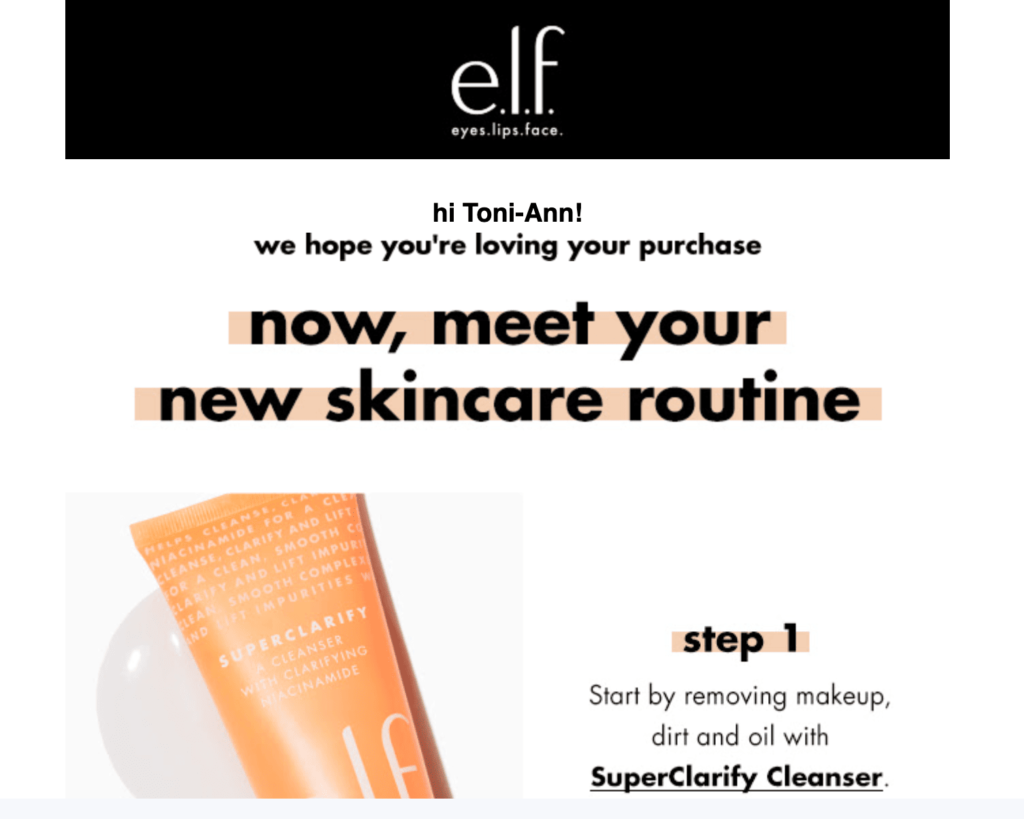
If you don’t know each customer’s name or your email marketing tool doesn’t allow you to address each customer by name (via merge tags), start with something equally casual, like ‘Hi, how are you doing?’ or just a friendly ‘Hello!’ As long as it sounds friendly and conversational, it’ll work much better than something like ‘Dear Sir/Madam’ or ‘Dear customer’.
Let your customers know who you are
Next up, include your store information in the email. People are naturally skeptical of spam and email viruses, so the more information you can provide about where and whom the email comes from, the better.
If you’re transparent about who you are and what you do, the recipient of your email will be more likely to trust the message and follow through with anything you have suggested they do, whether it’s to click a link or buy a product.
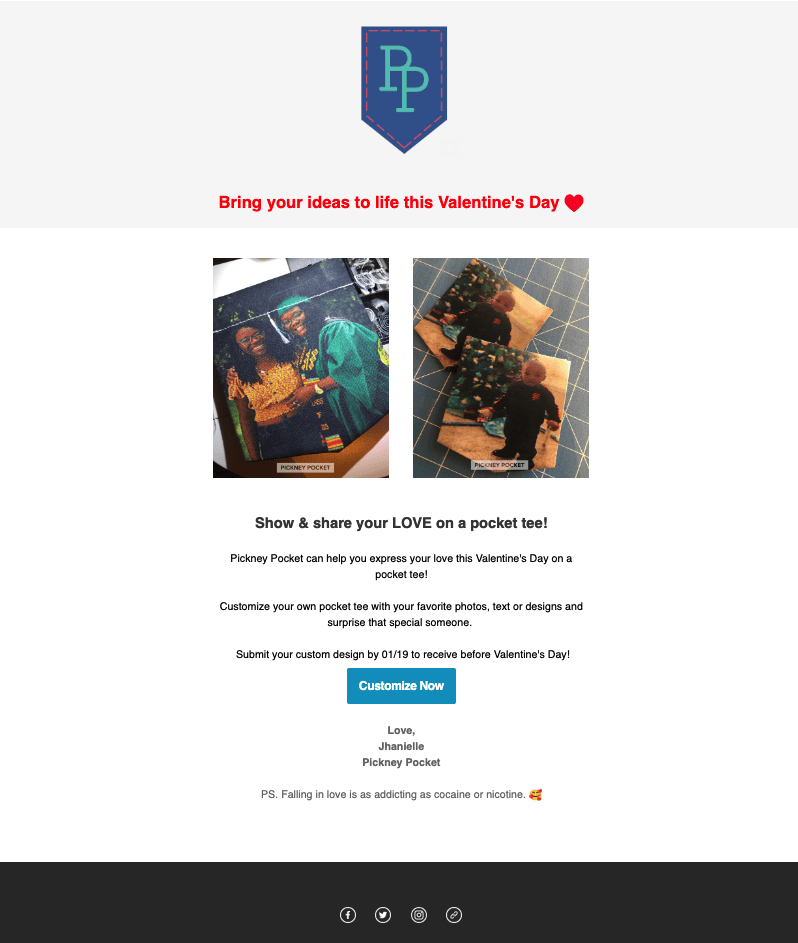
Most email hosting services will allow you to create a signature. It’s a great idea to write each email like you’re talking to a friend, finishing every message by signing off with your name; this will help to establish that human connection.
You should also include the name of your ecommerce store and a link to it so your recipient can check out your website and judge its credibility. Finally, make sure to place links to your social media accounts under your store link; social media integration is crucial and these links will provide your customers with more ways of connecting to your brand and store.
Be casual
The third step — and one that is often overlooked — is to keep the tone of your email open, direct and friendly. It needs to be personal and inviting — write as though you’re emailing a good friend!
Use exclamation marks and simple language. Avoid jargon, ask rhetorical questions, and sign off with friendly phrases like ‘Have a great week!’ as opposed to stiff phrases like ‘Regards’. Really reach out and let the reader know they can email you if they need any help, even if it’s a simple ‘If you have any questions, feel free to hit Reply and I’d be happy to help’ at the end.
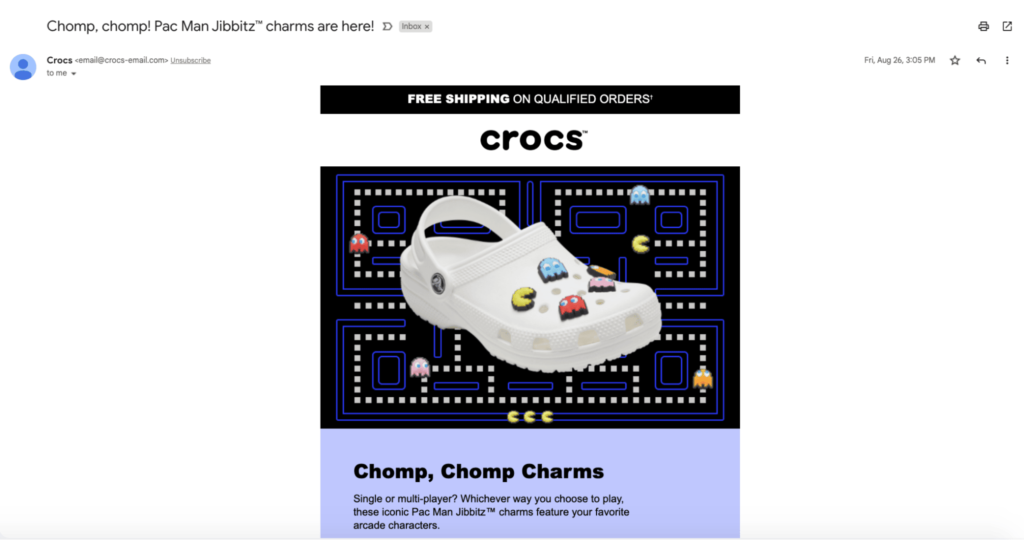
Keep that casual tone of voice in the subject line as well. You want the subject line to be interesting and engaging enough for the receiver to open the email. Keep in mind that it’s highly unlikely you’re the only person your subscriber receives emails from, so you have to compete for their attention with every other unread message in their inbox.
Segment your list
Finally, the last step is segmentation! Make sure you’re sending the right emails to the right people, otherwise your emails will go straight into the trash without being opened.
There is no use in sending an email about new female product arrivals to a male or announcing free shipping in Australia to all your international customers. Instead, send the right messages to the right recipients, and everyone will be happy (also, your emails won’t be marked as spam and rendered useless!).
2. Keep it short and sweet!
Keeping your emails concise is crucial to a successful email campaign. You may be tempted to include lots of information to tell your customers about all your products’ great and fabulous features, but trust me — this is counterproductive.
To really grab your customer’s attention, your email should be the following three things:
- Exclusive: Let the receiver know they’ve received this email because they are special (of course they are — they’re your customer!). You don’t have to tell them they’re pretty, but you have to let them know you have something exclusive for them, whether they’re the first to know about your newest products or offering them an exclusive discount. This will improve your relationship with the customer, and it won’t appear as though you’re hard-selling your products.
- Urgent: Having an offer available for a limited time makes it seem even more special. This can be anything from announcing a new range of products that are bound to sell out soon to a discount code valid for 48 hours only.
- Simple: Don’t crowd the email with too much information or visuals; you’ll be surprised how much you can communicate with a simple format. Stick to one or two calls to action, which can be as simple as including ‘Shop Now’ links.
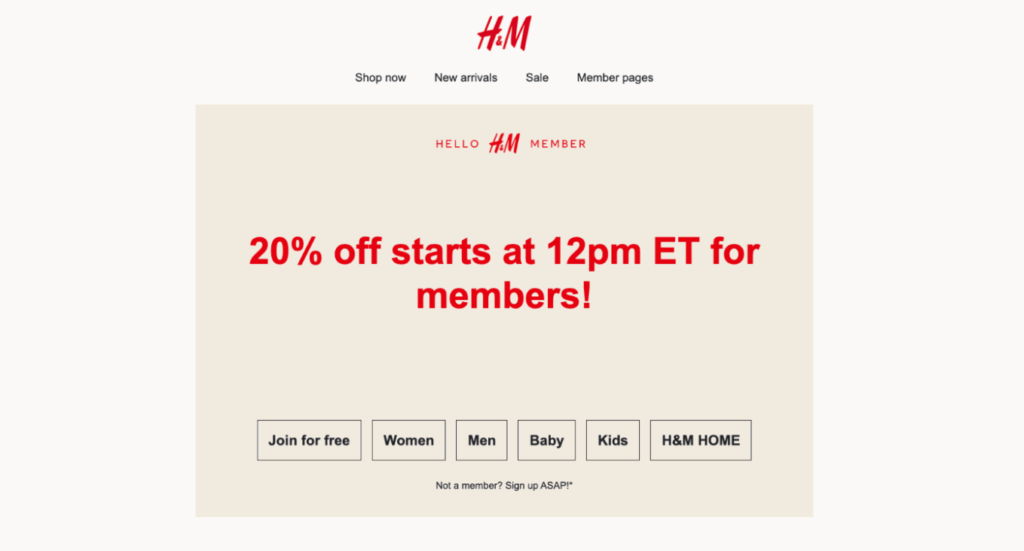
Take a look at what H&M has done in the screenshot above. They have made an exclusive offer to their email subscribers.
The email is full of links, meaning that if customers seek more information, with a quick click they are swiftly taken to the place they can find it. This means every little detail about your promotion does not need to be in one email, and those interested enough should follow the links and seek the information they want. It’s way more effective than overcrowding one email!
3. Nail your visuals
Emails are just like any other type of ad — they need to look awesome to attract attention!
Furthermore, they need to look awesome on any device. We wrote about the importance of having a responsive website, and ecommerce email marketing is no exception. Think about how many times you check your emails on your tablet or phone; your customers probably do the same!
Ecommerce store owners often overlook the importance of optimizing their email marketing campaigns for any device, and their emails often end up looking messy or even unreadable.
Make sure your text and images (if you have any) adjust to fit all screens without getting awkwardly cut off, and ensure that your links are big enough so people can easily tap them on their smartphones.
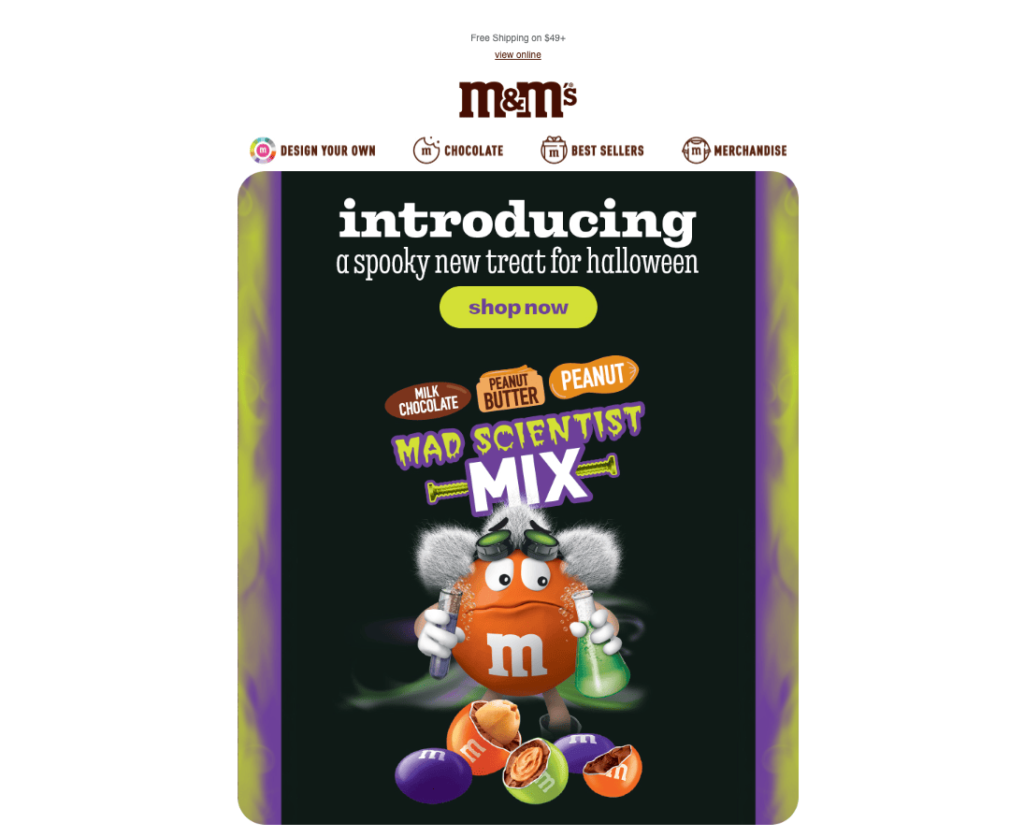
A clever way to ensure every customer can view your email (even if the email doesn’t display correctly in their email server) is to include a link to an online version of it. Many brands do this with a simple message at the top of the email.
Using images in your email campaigns can be effective, particularly when the email is directly related to your products (new arrivals, your store’s monthly favorites, discounts and promotions on certain products, etc).
But remember that we’re naturally drawn to images over text, so regardless of how good the copy is, people will delete the email if they see unprofessional pictures. Make sure you include high-quality images, and once again — don’t overcrowd! Keep backgrounds simple and let your products do the talking.
Lastly, use Canva to create a custom image that combines your product images with your announcement in a great typeface.
4. Check, double-check, and triple-check!
Sending an email with out-of-date information (such as out-of-stock products or broken links) can really hurt your brand’s image. Make sure you proofread your copy and test all of your links!
And speaking of links, don’t overdo it. Too many links will look like spam, and many hosting providers might even send your message straight to the junk mailbox. And like I said before, don’t include too many calls-to-action; you want the message of your email to be clear!
Another tip is to add your own email to your subscriber list so you get your store’s emails, just as a customer would.
You should definitely use analytics sites to see how you’re doing regarding who read and opened your email, how many followed links, and how many deleted the email. This will give you a good idea as to what works and what doesn’t! It’s all trial and error.
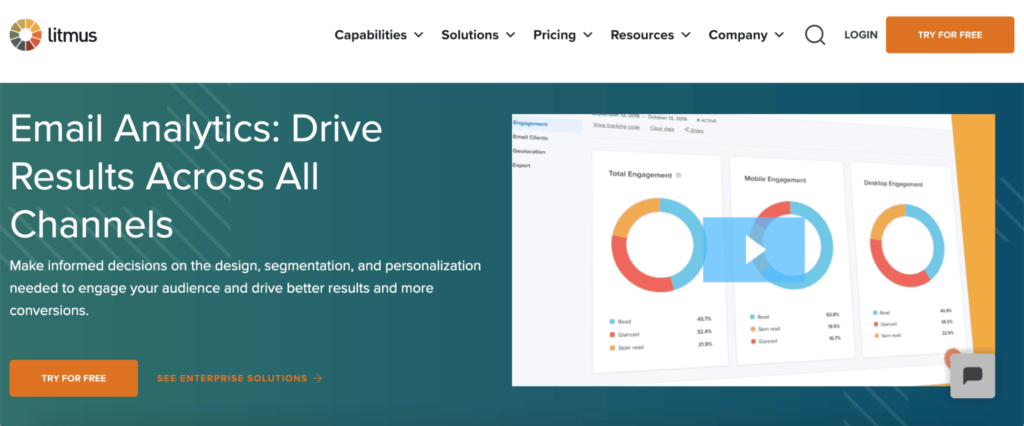
If you’re just looking for an analytics site, have a look at Litmus. This site will show how engaged your customers are with your emails.
Otherwise, you might want an email marketing manager who will help with the analytics and designing your emails. GetResponse is one such manager. Also, check out MailChimp, which is super user-friendly!
Get started with ecommerce email marketing — it’s powerful!
Because it lets you speak directly to your customer, email marketing is an incredibly useful and powerful tool to have in your arsenal. If you do it right, it’ll bring much more traffic — and sales — to your store.








